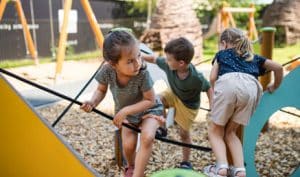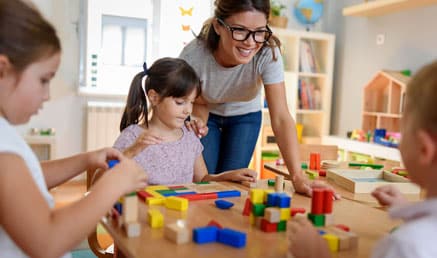
“It’s our polite nudge in the ribs to help you and your team stay organised and on task.”
This week’s subject is: Fit for purpose.
Element 3.1.1: Outdoor and indoor spaces, buildings, fixtures and fittings are suitable for their purpose, including supporting the access of every child.
How does your Service ensure that the physical environment is regularly reviewed and adapted to ensure its inclusive, welcoming and enriching, promotes inquiry, fosters learning & development, independence, engagement with the natural environment and is responsive to children’s interests?
Element 3.1.1 requires that the physical environment of the service is purposefully designed and maintained to meet the needs of all children, educators, and families. The environment must be safe, accessible, and conducive to learning, play, and rest. To ensure your service is consistently meeting this element, services must ensure they engage in ongoing reflection, maintenance, and adaptation to ensure the environment remains responsive to the evolving needs of the service’s community.
In ECEC, the physical environment is often described as the “third teacher, alongside educators and peers. A well-designed, fit-for-purpose space shapes children’s experiences, influencing their sense of belonging, independence, and agency.
A fit-for-purpose environment also supports educators by providing functional spaces to implement the curriculum effectively and families by offering welcoming, accessible areas that encourage engagement with the service.
Key considerations:
-
- Safety: The environment must be free from hazards, with fixtures and fittings in good repair.
- Accessibility: Spaces should be inclusive, allowing all children, including those with additional needs, to move freely and participate fully.
- Functionality: The layout and resources should support a range of activities, from active play to quiet reflection, aligning with educational goals.
- Engagement: The environment should inspire curiosity, creativity, and interaction, fostering children’s learning and development.
Creating a physical environment that is engaging, inviting, inclusive and welcoming to all children encourages interaction, creativity and a sense of belonging within the service.
When arranging the environment and resources ensure you:
-
- Include children’s input
- Consider how the environment fosters the participation of every child
- Consider visibility and effective supervision
- Conduct regular safety checks and audits
- Critically reflect on (and document) the reasons for the changes
- Consider how the layout of the indoor and outdoor environments support smooth transitions between experiences and the natural flow between indoor and outdoor spaces
- Consider how grouping of children within the learning environment minimises waiting times and conflict between children and supports the range of children’s development, skills, interests, abilities and ages
- Consider if the environment reflects the diversity within the local and wider communities
- Position quiet areas away from noisier play spaces
- Update your floor plan regularly to spark and maintain interest
- Regularly evaluate indoor and outdoor plans of furniture and resource placement
- Create a welcoming environment that encourages independence and supports a sense of belonging for children and families
- Arrange the environment strategically to avoid overcrowded spaces and extended waiting times
- Provide a range of open-ended equipment and resources that are challenging and cater to a range of developmental levels and ages
- Provide enough resources so that children aren’t having to wait for long periods to use equipment
- Provide opportunities for solitary and small and large group play and experiences
- Have documented risk assessments that address the impacts/barriers associated with the use of multi-purpose areas and supervision between areas that are widely spaced apart or include “blind spots” in between learning environments (Out of School Hours Services sharing multi-purpose areas with a school).
Resources:
Guide to the NQF- Element 3.1.1: Fit for purpose
We Hear You- Physical Environment
The Environment as the Third Teacher
We Hear You- Supporting Indoor and Outdoor Play
Tips to meet Quality Area 3: Physical Environment
Providing appropriate outdoor space
Within System7 go to Quality Area 3/ Modules 1 & 2 to submit self-assessment notes and if required, open a QIP issue if you identify any areas of improvement.
The Childcare Centre Desktop has a range of resources to assist services with physical environment. These include risk assessment and safety check templates and much more.
Resources, NQS Element, Regulation and System7 links:
Childcare Centre Desktop – Childcare Centre Desktop
National Quality Standard – QA 3/ 3.1.1- Fit for purpose
National Regulations – Chapter 4: Division 1A- Sleep and rest and Part 4.3- Physical Environment, 156
System7 Module – QA3/ Modules 1 & 2
If you have any questions send us a note via the Contact page here!




